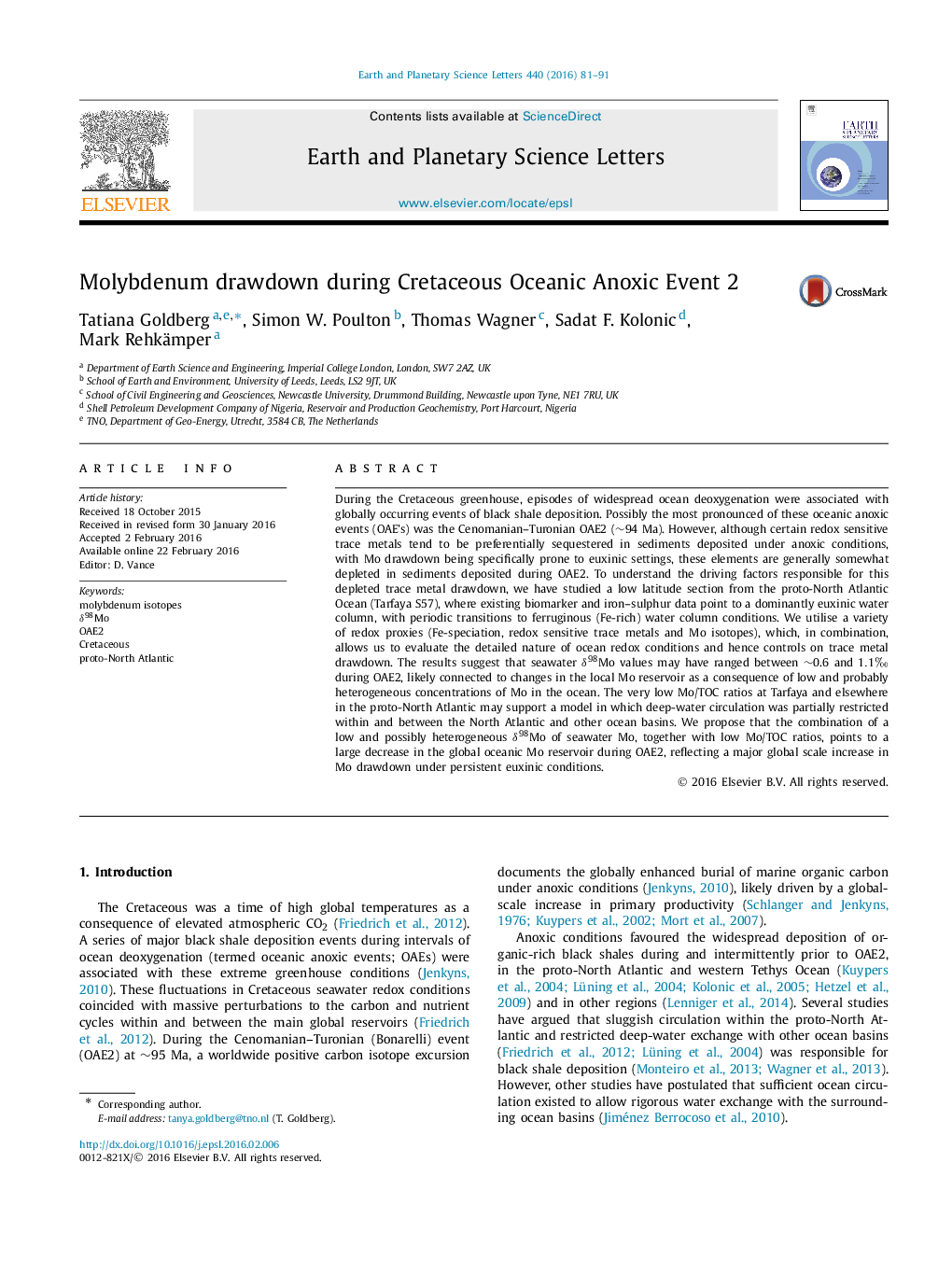| کد مقاله | کد نشریه | سال انتشار | مقاله انگلیسی | نسخه تمام متن |
|---|---|---|---|---|
| 6427592 | 1634716 | 2016 | 11 صفحه PDF | دانلود رایگان |

- Studied section is Tarfaya S57 - a low latitude from the proto-North Atlantic.
- We present Fe-speciation, trace elements, Mo isotopes in high resolution.
- Fluctuating anoxic, weakly to highly euxinic bottom water conditions.
- Low Mo/TOC and δMo98 point to decrease of Mo reservoir during OAE2.
- δMo98 and Mo concentration was possibly heterogeneous during OAE2.
During the Cretaceous greenhouse, episodes of widespread ocean deoxygenation were associated with globally occurring events of black shale deposition. Possibly the most pronounced of these oceanic anoxic events (OAE's) was the Cenomanian-Turonian OAE2 (â¼94 Ma). However, although certain redox sensitive trace metals tend to be preferentially sequestered in sediments deposited under anoxic conditions, with Mo drawdown being specifically prone to euxinic settings, these elements are generally somewhat depleted in sediments deposited during OAE2. To understand the driving factors responsible for this depleted trace metal drawdown, we have studied a low latitude section from the proto-North Atlantic Ocean (Tarfaya S57), where existing biomarker and iron-sulphur data point to a dominantly euxinic water column, with periodic transitions to ferruginous (Fe-rich) water column conditions. We utilise a variety of redox proxies (Fe-speciation, redox sensitive trace metals and Mo isotopes), which, in combination, allows us to evaluate the detailed nature of ocean redox conditions and hence controls on trace metal drawdown. The results suggest that seawater δ98Mo values may have ranged between â¼0.6 and 1.1â° during OAE2, likely connected to changes in the local Mo reservoir as a consequence of low and probably heterogeneous concentrations of Mo in the ocean. The very low Mo/TOC ratios at Tarfaya and elsewhere in the proto-North Atlantic may support a model in which deep-water circulation was partially restricted within and between the North Atlantic and other ocean basins. We propose that the combination of a low and possibly heterogeneous δ98Mo of seawater Mo, together with low Mo/TOC ratios, points to a large decrease in the global oceanic Mo reservoir during OAE2, reflecting a major global scale increase in Mo drawdown under persistent euxinic conditions.
Journal: Earth and Planetary Science Letters - Volume 440, 15 April 2016, Pages 81-91